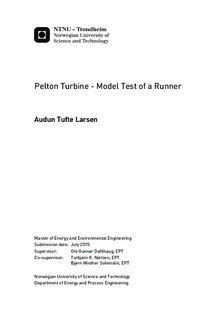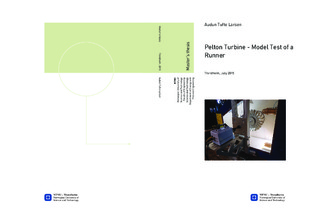| dc.description.abstract | Even though the Pelton turbine is more than a 100-year-old invention, there is still a lack of knowledge regarding the flow inside the bucket. A deeper understanding of the influence of bucket design on the flow behavior is necessary to enable further increase of the hydraulic efficiency. A model runner with known geometry has thus been made at the Waterpower Laboratory at NTNU, together with a test rig and setup for high-speed flow visualization.
Originally, the flows at two different nozzle heights were to be analyzed, as part of the thesis. However, since the goal was to find methods to compare flows in general, due to time limitations it was decided to compare the flows at two different operating conditions having the same nozzle height instead. Furthermore, the flow comparison was performed using films from the original setup, since the new setup was under implementation during the entire period. As it was decided to prioritize the implementation of a new experimental setup, time did neither allow for particle tracing through the bucket, as originally planned.
At first, films from the original visualization setup were analyzed, using image post-processing tools. Different ways of comparing flows qualitatively were found and presented. However, the obtained images did not enable quantitative analyses of the flow. Furthermore, the camera setup generated images from only parts of the bucket duty cycle.
Consequently, a discussion of potential improvements of the setup was carried out, to enable filming with even more details and to make quantitative analysis of the flow possible. The preferred alternatives for improvements were designed and produced. As a result, a new experimental setup for high-speed flow visualization, based on an onboard borescope, was implemented on the test rig. This included an illumination setup based on a pulsating laser. Procedures for installing and use of the new setup are presented.
The new camera setup was tested and worked successfully, providing close-up images of a whole bucket half through the entire runner rotation. However, the laser did not work during testing, so the images were too dark to analyze with much detail. Thus, the total performance of the new setup is not known yet.
However, as soon as the laser has been fixed, there is belief that the resulting setup for high-speed flow visualization will generate images, which are so detailed that quantitative experimental analyses of the flow inside a Pelton bucket is made possible. | |

